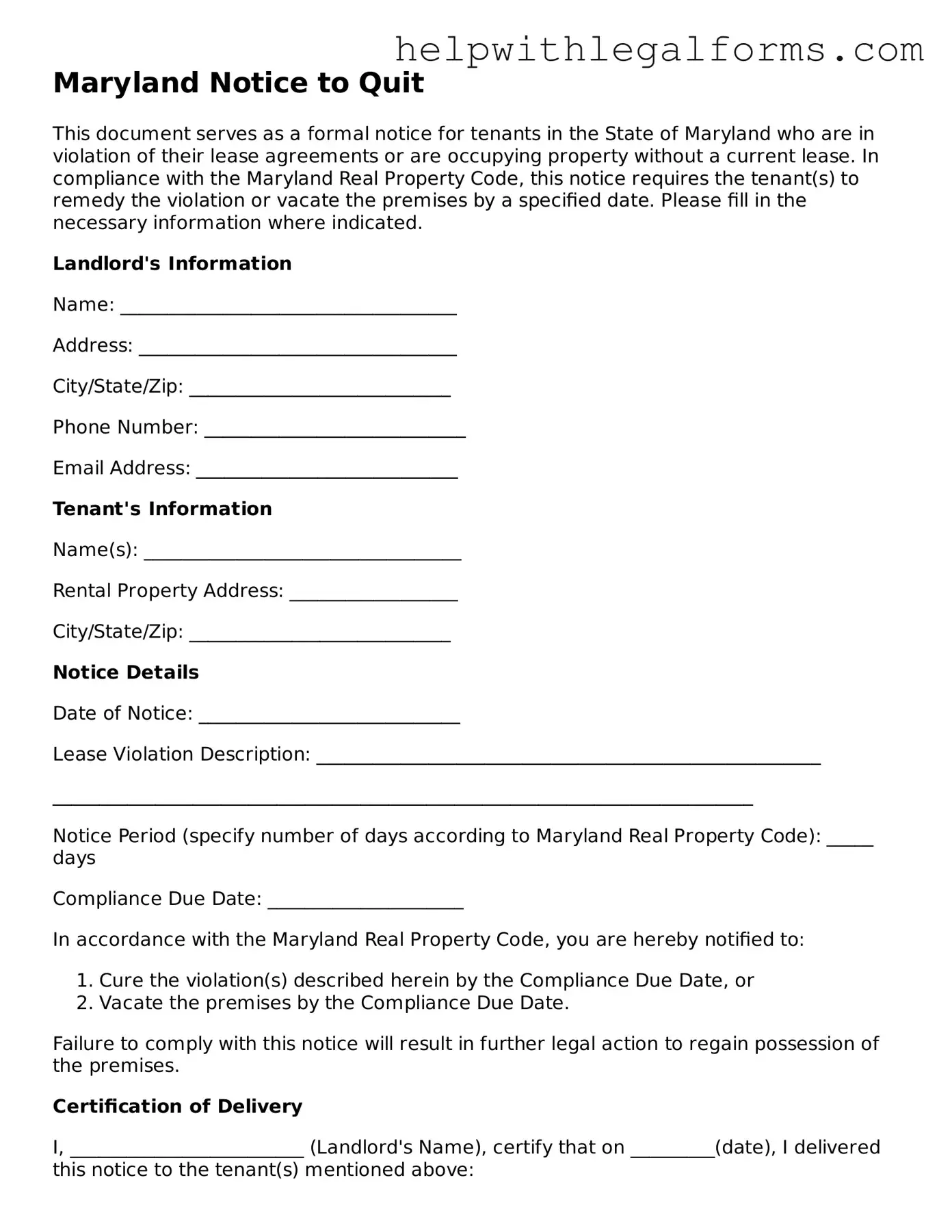Maryland Notice to Quit
This document serves as a formal notice for tenants in the State of Maryland who are in violation of their lease agreements or are occupying property without a current lease. In compliance with the Maryland Real Property Code, this notice requires the tenant(s) to remedy the violation or vacate the premises by a specified date. Please fill in the necessary information where indicated.
Landlord's Information
Name: ____________________________________
Address: __________________________________
City/State/Zip: ____________________________
Phone Number: ____________________________
Email Address: ____________________________
Tenant's Information
Name(s): __________________________________
Rental Property Address: __________________
City/State/Zip: ____________________________
Notice Details
Date of Notice: ____________________________
Lease Violation Description: ______________________________________________________
___________________________________________________________________________
Notice Period (specify number of days according to Maryland Real Property Code): _____ days
Compliance Due Date: _____________________
In accordance with the Maryland Real Property Code, you are hereby notified to:
- Cure the violation(s) described herein by the Compliance Due Date, or
- Vacate the premises by the Compliance Due Date.
Failure to comply with this notice will result in further legal action to regain possession of the premises.
Certification of Delivery
I, _________________________ (Landlord's Name), certify that on _________(date), I delivered this notice to the tenant(s) mentioned above:
- In person,
- By securing it to the door of the leased premises,
- By certified mail, return receipt requested.
Landlord's Signature: ______________________
Date: ___________________________________
This form is provided as a courtesy and does not constitute legal advice. Landlords are advised to consult with an attorney to ensure compliance with all applicable Maryland laws and regulations.
